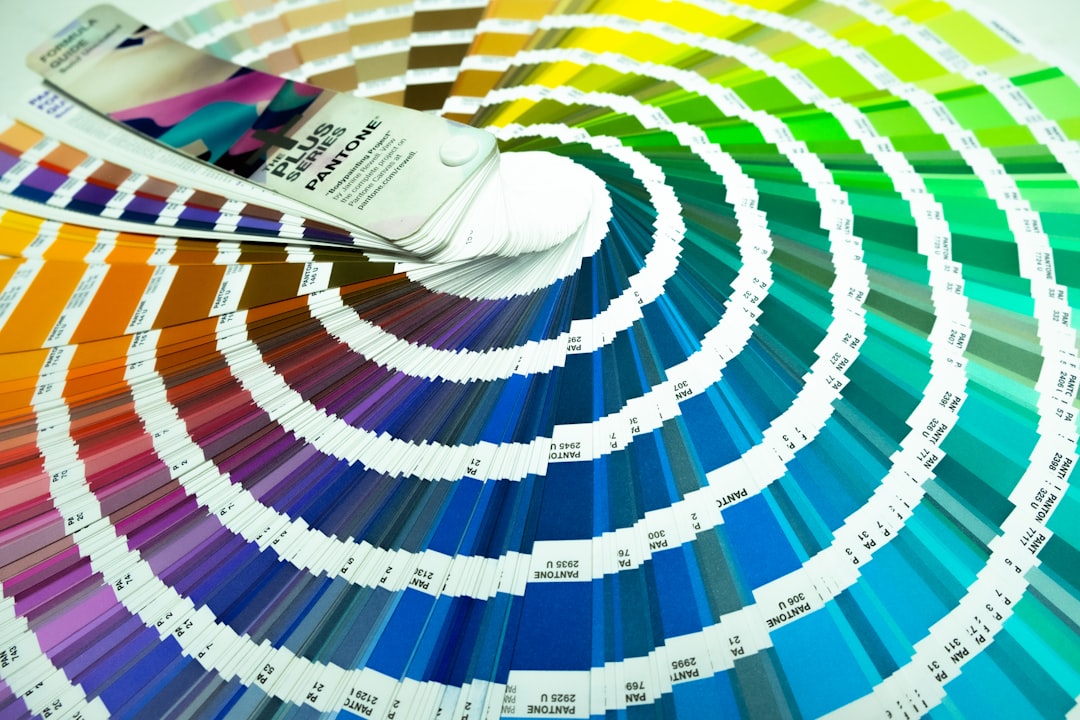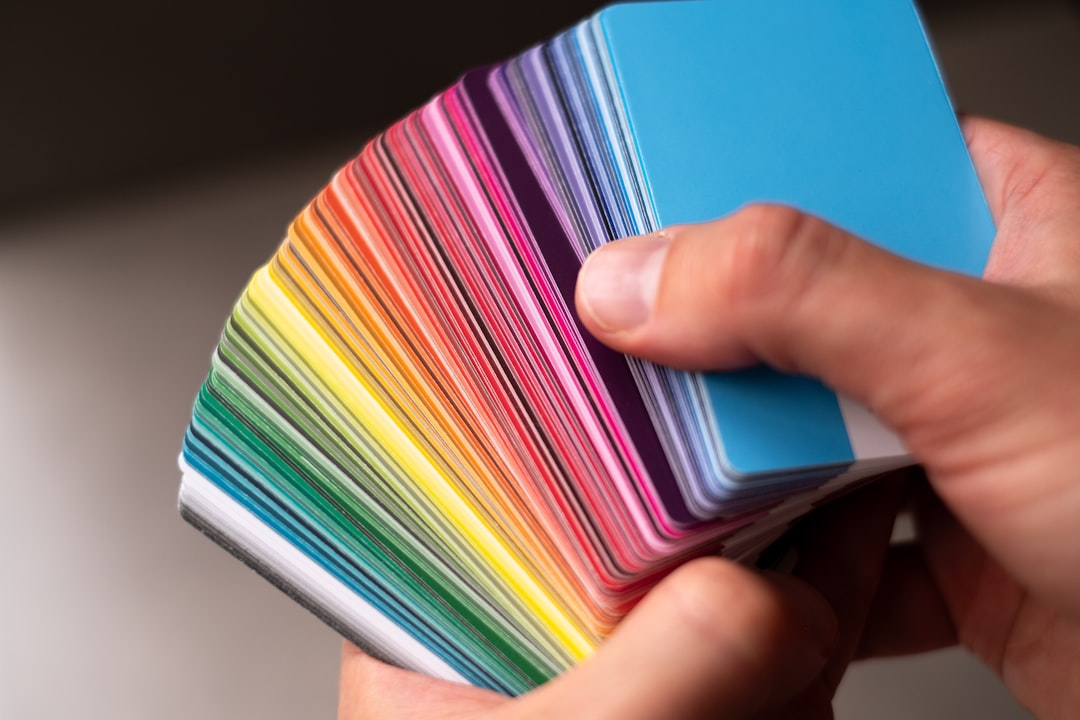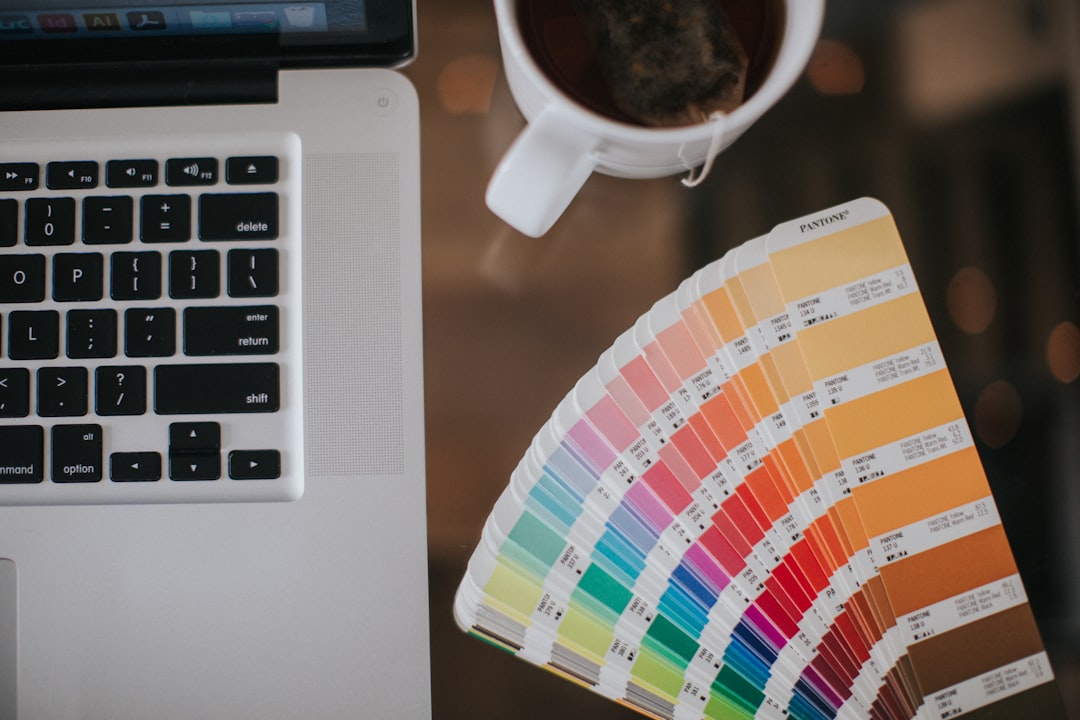

Engage prospects with a scan and streamline customer engagement with FREE QR code marketing tools by Sona – no strings attached!
Create a Free QR CodeFree consultation

No commitment

Engage prospects with a scan and streamline customer engagement with FREE QR code marketing tools by Sona – no strings attached!
Create a Free QR CodeFree consultation

No commitment
QR codes have evolved from a novelty to a strategic powerhouse in bridging offline engagement with online action. For color separation and offset printing services, QR codes represent a frictionless and effective tool for enhancing print marketing, increasing customer interaction, and supporting both customer acquisition and retention, all without requiring complex setups or app downloads.
Precise color management and high-value print runs have always demanded exacting standards, and these expectations now extend into how customer engagement and campaign success are measured. Many in this space grapple with lost opportunities when high-value leads interact with print, such as reviewing a brochure or sample, but leave behind no data trail. Traditional workflows do not register these touchpoints, making it harder to track, segment, or follow up on real buyer intent.
By embedding QR codes into offset printed materials, color separation and offset printing providers can deliver enhanced print quality, track engagement, replace manual and paper-based processes, and dynamically connect every campaign to digital analytics and outcomes. This empowers providers to capture interest from otherwise anonymous prospects, build more accurate campaign reporting, and unlock growth opportunities, while also supporting eco-friendly offset printing initiatives and addressing core challenges in print marketing optimization.

Print marketing teams are all too familiar with missing insights from untracked interactions, whether it is a prospect reviewing a product sheet at a trade show or a client considering a reorder from a catalog. QR codes bridge the gap between physical touchpoints and digital outcomes, making these moments actionable and measurable. When the creative, production, and marketing teams collaborate on QR strategy, every sheet that leaves the press can double as a data capture surface and a conversion path.
The keys to success are simple: replace analog dead-ends with scanable experiences, define what success looks like before you print, design for scannability, and connect scans to your CRM so follow-ups happen automatically. The right approach fits naturally into your prepress checklist and pressroom workflow, ensuring QR becomes a habit rather than a one-off experiment.
As you operationalize these steps, institute a test-and-learn loop. Run small-batch pilots, compare scan performance across placements and calls to action, and roll winning approaches into broader production. Platforms like Sona QR product overview support this entire cycle with dynamic codes, analytics, and CRM integrations that fit neatly into your existing process.

Many print providers struggle to connect offline materials with digital action, a friction point that becomes obvious when visitors browse print catalogs or packaging but never reach out. Without knowing who is interacting, the sales team cannot prioritize outreach, and marketing teams cannot attribute wins to the print assets that influenced them. QR codes convert that silent interest into identifiable, measurable signals. See the Sona QR marketing guide for strategy basics.
The appeal is both behavioral and operational. For buyers, QR codes reduce effort at moments of intent by enabling a single scan to launch a sample request, reorder, or digital proof approval. For providers, dynamic QR codes make print assets adaptable. You can update a landing page or promotion without reprinting, which improves cost efficiency, reduces waste, and supports sustainability goals that are increasingly important in procurement decisions.
From appointment cards for press checks to flyers in sample kits and billboards promoting new specialty finishes, QR codes make your physical presence measurable and your next action obvious.

Successful use of QR codes begins with format selection that matches the intent of your audience and the context in which they scan. Offset environments add another layer of consideration: the scanning distance, surface finish, and lighting will influence whether a format delivers the quickest path to value.
Web links and forms tend to drive the highest value in this vertical, because they gather specifications, accelerate quoting, and create a CRM record without manual effort. vCard QR codes and click-to-email are strong in face-to-face scenarios like trade shows or plant tours, where time is limited and buyers want to keep moving.
Choose dynamic codes for any campaign likely to evolve or for anything that benefits from analytics. Use static codes for evergreen resources such as a permanent support contact or a general PDF that is unlikely to change.
Even the strongest print collateral can underperform if you cannot measure audience behavior. Growth opportunities emerge when every high-intent touchpoint becomes a two-way channel: the buyer gets instant value, and you get the data needed to follow up.
Start by mapping your common offline surfaces and moments of engagement. Identify where questions arise or decisions are made, then attach a QR code that answers the question or moves the decision forward. Over time, you will discover which placements yield the best scan-to-conversion rates, letting you prioritize budget and design effort accordingly.
With reliable QR-driven attribution, your team can redirect spend away from low-performing placements and double down on surfaces that consistently drive scans, form fills, and quotes. Explore Sona QR use cases for more ideas.

Offset and color separation teams produce sophisticated print work, yet too many interactions remain invisible after delivery. The following use cases turn passive impressions into actionable signals that feed your pipeline and sharpen your service.
Begin by choosing use cases that mirror core workflows: quoting, sampling, proofing, and feedback. Then add post-sale programs like reorder prompts and loyalty enrollment to extend lifetime value. Each code can be labeled with a clear benefit, such as Scan for Instant Estimate or Scan to Approve Proof, so the user knows exactly what they will get.
Using these in tandem lets you map behavior across the lifecycle. A buyer who scans a case study at a trade show, requests a sample later, and approves a proof the following week has clearly signaled intent and readiness.
Each QR code scan is a data point that can tell you who scanned, from where, and why. With multiple codes deployed across your assets, you can segment audiences by behavior and funnel stage, then tailor follow-ups that respect context and maximize relevance.
For color separation and offset printing, meaningful distinctions often include prospect versus active customer, end user versus procurement, and designer versus operations. A designer scanning a swatch gallery has different needs than a purchasing manager scanning a reorder label. Build segments that reflect these roles and actions.
With Sona QR, each code can carry metadata like campaign source, asset ID, and journey stage. These fields mirror your CRM structure so you can personalize at scale without manual list building.
QR codes are more than convenience links. They stitch your offline presence to digital experiences and add measurable lift across every channel, from print collateral to social to field events. When used consistently, codes create a shared language across teams, making attribution clearer and decision-making faster.
Start by identifying your top five channels for demand generation and retention. Add QR codes that accelerate the next best action for that channel, then standardize how you report performance so teams can compare apples to apples. The result is a connected funnel where each scan is a traceable step toward conversion or expansion.
Centralizing all codes and results in a platform like Sona QR makes it easy to manage destinations, monitor performance, and sync scan activity with your CRM and ad platforms for coordinated retargeting.
Print providers often face gaps between campaign launch and measurable impact when follow-up is manual or inconsistent. A simple, repeatable checklist keeps campaigns on track and ensures design, prepress, and marketing stay aligned from concept to conversion.
Use the following steps as your standard operating procedure. Integrate them into your prepress checklist, and add verification passes just like you would for trapping, registration, and color targets. This brings the same rigor you apply to image quality into your marketing performance.
Define the business outcome you want from this asset and who the intended scanner is. For example, focus on increasing eco-conscious sample requests at an industry expo or accelerating proof approvals for enterprise accounts.
Decide whether the experience and analytics need to change over time. Use dynamic codes when you want real-time tracking and the ability to update destinations without reprinting. Use static codes for truly permanent destinations.
Design for scannability first, then aesthetics. Incorporate your brand within safe technical limits. Conduct live tests at expected viewing distances and lighting conditions on the actual substrate.
Roll out the codes where they will be noticed and scanned. Consider the buyer journey and place codes at moments of decision, not as an afterthought.
Treat scans like website visits. Measure, learn, and iterate. With dynamic codes you can refine destinations without reprinting, which turns your printed assets into long-running, high-performing channels.
By following these steps, you will move from one-off QR experiments to a disciplined program that compounds results over time.

Too often, teams stop at counting scans. The real ROI emerges when you connect scan activity to pipeline creation, proof approval velocity, and reorders. When your analytics show which print assets move buyers forward, you can forecast with confidence and scale what works.
Start by capturing the basics: timestamp, device type, general location, and campaign. Then layer on account-level context and downstream outcomes. Stitch scan data to CRM records so you can see whether a brochure scan led to a quote, whether a job-label scan correlated with a support ticket reduction, and whether a packaging scan drove a reorder.
This end-to-end visibility transforms QR from a convenience feature into a performance marketing asset. Sona QR captures the real-world engagement, and Sona.com translates those events into actionable insights that tie directly to revenue.
QR programs stall when deployments are generic or follow-up is manual. The most successful teams standardize how they generate, design, and track codes, then turn every scan into a trigger for the next best action. Treat QR like any other performance channel, complete with creative testing and tight operational handoffs.
Focus your early improvements on placements where intent is already high. Then add automation that keeps the conversation going without manual intervention. Over time, your print assets will act like persistent, high-converting landing pages with the advantage of physical presence.
Creative example: Print a QR code on offset invoices that links to environmental certifications and a quick NPS survey. Customers get transparency and an easy way to give feedback, while you collect data that can spark upsell conversations about sustainable stocks or inks.
Industry leaders are using QR codes to make their print work perform like digital channels. The common thread is clear value on scan, strong creative signals, and clean data capture behind the scenes. These examples illustrate how subtle shifts in placement and messaging can unlock meaningful lift.
Avoid turning QR into a generic link. Tailor the destination to the asset’s role in the journey, and make the benefit explicit. When a code moves someone forward immediately, your scan-to-lead rate rises and follow-up becomes more relevant.
These examples show that the most powerful QR applications are not flashy, they are focused on reducing friction at a specific step in the buying process.
A few technical and strategic missteps can sink scan rates or erode trust. Conversely, a handful of best practices will protect scannability, preserve brand aesthetics, and keep destination experiences aligned to intent. Treat QR design like any other production specification and assign ownership for ongoing maintenance.
Begin with the physical realities of offset printing. Halftones, coatings, and substrate textures can all influence scannability. Put QR on your preflight checklist and set minimum standards for size, contrast, and placement, just as you do for color targets and registration.
Addressing these pitfalls with a cohesive QR strategy ensures that print marketing delivers consistent, high-impact results in a digital-first world.
QR codes serve as a strategic foundation for color separation and offset printing services, bridging the persistent gap between understanding customer action and acting on new opportunities. When moments of intent, such as a scanned sample request, portfolio view, or feedback submission, are turned from anonymous touchpoints into actionable signals, every print asset becomes a springboard for growth.
By uniting best-in-class print quality with data-rich engagement tracking, providers move beyond guesswork, creating a continuous feedback loop between offline engagement and digital follow-up. This unlocks not only better lead and revenue attribution but also creates new avenues for upsell, cross-sell, and customer retention through highly relevant outreach.
A unified QR code approach turns each print piece from a passive information tool into an interactive, measurable channel, helping color separation and offset printing businesses capture, qualify, and convert more opportunities in a landscape where every engagement counts. If you want to pilot this in a low-risk way, Start creating QR codes for free, add them to your next run, and watch how quickly your printed assets start pulling their weight in the pipeline.
QR codes have transformed the color separation and offset printing services industry from a purely technical process into a dynamic, interactive marketing channel. By integrating QR codes, printers and designers can not only enhance customer acquisition but also elevate client experiences through instant access to proofs, tutorials, and personalized offers—turning traditional print materials into measurable, high-impact conversion tools. Imagine knowing exactly which printed pieces drive engagement and sales, enabling you to optimize campaigns with precision.
With Sona QR, you can effortlessly create dynamic, trackable QR codes tailored for offset printing projects, update campaigns instantly without costly reprints, and directly link every scan to revenue metrics. No more guesswork—just actionable insights that connect your print work to real business growth. Start for free with Sona QR today and transform every print job into a powerful driver of customer engagement and profitable conversions.
Color separation ensures precise color management, enabling high-quality print runs that meet exacting standards essential for offset printing services.
Color separation improves print quality by avoiding registration misalignment, dot gain, and moiré effects, using techniques like 100 percent K for QR codes and maintaining crisp vector paths.
Look for providers who integrate precise color management with advanced QR code strategies that enhance print quality, track engagement, and connect print campaigns to digital analytics.
QR codes enhance print marketing by enabling offline to online activation, increasing customer interaction, tracking engagement, replacing manual processes, supporting eco-friendly initiatives, and linking print to digital outcomes.
Best practices include designing QR codes with 100 percent K, avoiding rich blacks, ensuring adequate size and quiet zones, testing scannability on final substrates, placing codes at high-intent spots, and combining color separation with effective QR code integration.
Use Sona QR's trackable codes to improve customer acquisition and engagement today.
Create Your FREE Trackable QR Code in SecondsJoin results-focused teams combining Sona Platform automation with advanced Google Ads strategies to scale lead generation

Connect your existing CRM

Free Account Enrichment

No setup fees
No commitment required

Free consultation

Get a custom Google Ads roadmap for your business






Launch campaigns that generate qualified leads in 30 days or less.
